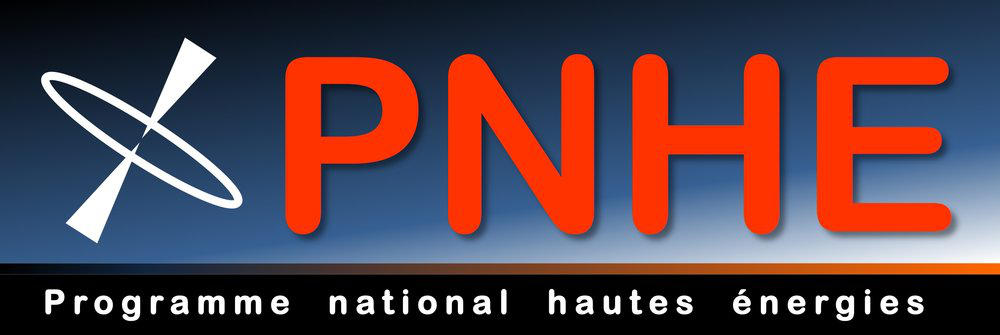To go further :
the grandma citizen science website on gravitational wave astronomy.
supported by GRANDMA and université de paris.
FAQ
Astronomy is considered as the oldest science. At the beginning, all the observations were made with the naked eye because the Ancients were not able to design telescopes but were helped in this task by the absence of industrial and especially light pollution. It was only several millennia after these first observations that Galileo, relying on the work of the Dutch Lippershey, used a telescope to observe the sky. Until the 20th century, astronomers could only see waves in the visible, but with scientific and technological advances in the 20th century, the entire spectrum of electromagnetic waves could be observed from radio waves to gammas passing through the infrared and the ultraviolet. These observations made it possible to make many discoveries in this period which is called multi-wavelength astronomy.
With the success of joint GW and EM observations to explore the compact binary systems has been demonstrated by the success of GW170817, AT2017gfo. GRB170817A, a short gamma ray burst (sGRB) and AT2017gfo, these associated events were the EM counterparts of GW170817, marking the beginning of a new type of astronomy, "multi-messenger astronomy". The idea of the multi-messenger approach is to combine electromagnetic signals (radio, visible, x-ray and gamma) from astronomical sources with other messengers as neutrino, cosmic rays signals and / or GWs to establish the nature of the physical phenomena taking place in sources like black holes and neutron stars. In this era, telescopes are just one type of instrument and must collaborate with other detectors.
Overall, the multi-messenger observation and analysis has been of interest for many reasons: first on the astrophysical scenarios, to place constraints on the matter ejecta, geometry, on nucleosynthesis and to prove BNS mergers to be a production side for heavy elements, on star formations rate, on the physics laws not reproducible on Earth about matter behavior at extreme densities, the supranuclear equation of state describing the NS interior, on cosmology to determine the expansion rate of the, on fundamental physics to provide tests for alternative theories of gravity, to set bounds on the speed of GWs.
Gravitational waves (GW) are vibrations of space-time propagating in the Universe and produced by extreme cataclysmic events. When propagating in time and space, the GWs stretch and expand space-time so that two points of space normally at rest see their respective distances to be first shortened and then widened. This effect on space and time is tiny, typically we measure relative displacement of about a hundred million times smaller than the typical size of an atom.
To go further :
- Gravitational waves explained using stick figures [video]
- LIGO - What is a Gravitational Wave? [video]
- Introduction to LIGO & gravitational waves [article]
- Les ondes gravitationnelles ou les frémissements de l'espace-temps [video] (in French)
On Earth, we detect the relative displacement via gravitational-wave detectors; we use kilometer scale interferometers, which use a combination of mirrors and lasers to make precise distance measurements. In a nutshell, using a beam splitter, a light source is split into two arms. Each of those light beams is reflected back toward the beam splitter which then combines their amplitudes using the superposition principle and results in an interference pattern. When a GW passes through the interferometer, the space-time in the local area is altered. Depending on the source of the wave, this results in an effective change in the length of one or both of the cavities. The cavity will therefore periodically get very slightly out of coherence and the beams, which are tuned to usually be destructively interfering at the detector, will have a very small, periodically varying detuning. This results in a measurable signal. There are a number of kilometer scale detectors in operation including LIGO-Handford and LIGO-Livingston, in the United States, Virgo in Italy, GEO in Germany, and Kagra in Japan.
Up until now, we have detected GWs from stellar compact events: the merger of compact objects in binary systems involving either two black holes (BBH), two neutron stars (BNS) or a mix of them (NSBH). With the gravitational signal, we have a direct access to the distance (so to the host galaxy) of the event and the masses (indicator of the nature) of the two compact objects involved in the merger. BNS and NSBH mergers are the most promising sources of light counterparts as a fraction of the matter can be expelled and radiated through several mechanisms post-coalescence.
To go further :
On September 14th, 2015, both Advanced LIGO detectors in the USA, H1 in Hanford, Washington and L1 in Livingston, Louisiana, made the first direct measurement of a GW signal. The event, GW150914, was determined to be the merger of two black holes, with masses of 36 M⊙ and 29 M⊙, into a black hole of approximately 62 M⊙. 3.0 solar masses of energy (5.4 × 1047 J) were radiated in GWs. The gravitational waves from this event, which occurred at a distance of 410 Mpc (1.3 x 109 light years), changed the separation between the test masses by 4×10−18 m, about one 200th of a proton radius. Since this first detection of GWs, there were 11 confirmed detections during first and second observation runs (2015-2017) and 56 candidates detected during the third observing run (2019-2020). The first results of the latest run have already shown the huge potential of gravitational waves to reveal new astrophysical events : the number of interesting candidates, including the two neutron star systems, potentially the first black-hole--neutron-star merger and asymmetric collisions.
To go further :
Automated preliminary alerts are sent for all events that pass a false alarm rate (FAR) threshold. FAR is a statistic that is used to describe the significance of a GW event. It is defined as the rate of accidental events due to detector noise or glitches, in the absence of any astrophysical sources, that are as loud as or louder than the event in question. Alerts were sent out on the Gamma-ray Coordinates Network (GCN), a portal for discoveries and observations of astronomical transients. Historically, GCN has served high-energy satellites but now also other electromagnetic wavelengths and also GW, cosmic ray, and neutrino facilities. LIGO/Virgo uses GCN Circulars to announce detections, and the astronomy community expects participants to promptly disseminate preliminary reports of follow-up observations of LIGO/Virgo counterparts using GCN Circulars as well.
Within a few seconds/minutes, a rapid map of the source’s localization is sent determined by an algorithm which encodes the time shift and amplitude of the signals observed in each interferometer. The more detectors there are and the liu, the greater the precision is. In the hours after the trigger time, a more sophisticated analysis is performed to determine more precisely parameters such as sky location, distance, masses and spins. Thanks to the frequency (and its evolution) of the signal, we can determine the system’s chirp mass (symmetric combination of the primary and secondary component masses) which gives us constraints on the mass of objects and therefore allows us to determine their type (BNS for Binary Neutron Star, BBH for Binary Black Hole, NSBH = Neutron Star-Black Hole, Mass Gap if at least one compact object whose mass between 3 and 5 solar mass an Terrestrial classification for that are of instrumental or environmental origin). Thanks to the duration of the signal, because the interferometers are more sensitive to the frequencies made by objects of low masses, it is also even possible to detect the signal before the collision.
To go further :
A kilonova is a relatively fast (day/week timescale) and faint visible/infrared (absolute magnitude of -16 at peak luminosity) transient phenomenon. It is radiated by a fairly isotropic ejecta expelled at a fraction of the speed of light. Kilonovae are powered by the radioactive decay of heavy nuclei within the ejecta from the intense bombardment of nuclei lighter than iron by energetic neutrons. This process is known as the r-process, whose physics requires an energetic and extremely neutron-rich environment to be effective. The violent matter ejections resulting from the coalescence of two neutron stars (or a collision between a black hole and a neutron star) can produce an environment conducive to the r-process and has been proposed, two decades ago, as being one of the production sites of the heaviest elements in the Universe.
On 2017, August 17th, a GW signal triggered the two LIGO interferometers; although there was no detection with Virgo, the non-detection helped to strongly constrain the sky localization of GW170817, as due to the antenna pattern of GW detectors, it would have been seen if it had come from other directions. The analysis of the signal revealed that this event originated from the coalescence of two neutron stars located at a distance of about 40 Mpc. About eleven hours after the GW signal, an optical emission at an apparent magnitude of about 17 was detected in the galaxy NGC 4993 and was unambiguously associated with the merger of the two neutron stars. Additional optical and infrared data taken days after the merger event later confirmed that this optical emission was a kilonova powered by r-process channels. The first ever kilonova unambiguously discovered so far!
To go further :
The Global Rapid Advanced Network Devoted to the Multi-Messenger Addicts (GRANDMA) is a world-wide collaboration with both photometric and spectroscopic facilities, with a large amount of time allocated for observing transient alerts as a telescope network. The GRANDMA consortium includes currently 25 telescopes in 20 observatories, 29 institutions and groups from twelve countries. Thanks to the allocated time available to GRANDMA, the collaboration can cover hundreds of square degrees within 24 hours which allows for a rapid search of the sky localisation area of any GW alert provided by the LIGO/Virgo collaboration. In particular, GRANDMA has the capacity to catch the early stage of the visible components of the post-merger ejected material, potentially with information obtained early on in the color evolution of the transient. While GRANDMA has some shortcomings, for example, very large telescopes are required for deep spectroscopic follow-up, it offers unique worldwide observational capabilities complementary to those of other collaborations.
During the third observational campaign (O3), six wide-field-of-view telescopes were able to cover ∼ 1000 deg 2 down to 18 mag and ∼ 100 deg 2 down to 22 mag in a single night of observations. Interesting transients could be imaged down to ∼ 23 mag in the Northern hemisphere either for photometry and ∼ 22 mag for spectroscopy (e.g GTC). In the future, the entire concept will be expanded, thanks to the possibility to connect any team, any professional or amateur telescope, anytime to GRANDMA.
The prompt full coverage of the transient sky accessible by GRANDMA at a given time is presented just above. In 24 hours, thanks to their distribution across the Earth and especially at eastern longitudes, the GRANDMA network is able to access over 60% of sky (up to more than 72%) during nights to a limiting magnitude of 18 mag about 75% of the time. Due to a lack of western observatories, the sky coverage is reduced to 40-50% during the western nights. All the telescopes are connected to ICARE (Interface and Communication for Addicts of the Rapid follow-up in multimessenger Era) which automatically provides dedicated observation plans to any telescope as soon as a GW alert is received.
During O3, the GRANDMA network followed 90% of the alerts, and employed its unique citizen science program to involve amateur astronomers in following up potential events. The sheer number of alerts followed up by GRANDMA telescopes clearly demonstrated its need for dedicated human organisation, data analysis, and world-wide communicating systems. APC was particularly involved in this success with Sarah Antier (PI of GRANDMA), Alexis Coleiro (PI of the ToO Proposal for GRANDMA on CFHT) and Cyril Lachaud (contributor to the ICARE tools).
To go further :
- The first six months of the Advanced LIGO’s and Advanced Virgo’s third observing run with GRANDMA [publication]
- GRANDMA Observations of Advanced LIGO's and Advanced Virgo's Third Observational Campaign [publication]
- What is a kilonova and how do you detect one? [video]
- Multi-messenger astrophysics and the GRANDMA generation [publication]
- The GW astronomy with GRANDMA and Kilonova-Catcher [video]
The GRANDMA Collaboration has developped a simple ranking scale to classify the scientific interest of an alert for the follow-up teams.
This ranking scale is based on physical properties of the alerts, the type of transients (GW source, Gamma-ray Burst, Supernovae, etc.) and the observational
constraints related to the alert sky localization region. This scale goes from 0 (No further interest for follow-up) up to 5 (golden event). Note that this ranking scale is upgradeable. More details about
the ranking levels are given below
- Score in the range [0-1] "No further interest": Too many telescope resources need to be engaged for a quasi null discovery potential
- Score in the range [1-2] "Low interest": Few chances to detect any optical counterpart.Low priority observation in the telescope schedulers
- Score in the range [2-3] "Interesting": There is a non negligible probability to detect an optical counterpart (for GW sources need to pave the highest probabilistic GW localization regions)
- Score in the range [3-4] "High interest": Many observational and physical conditions are satisfied to get significant chance to detect the optical counterpart of the transient or at least to put significant constraints on its optical flux. A fast follow-up response is required.
- Score in the range [4-5] "Golden event": There are almost no observational constraints and the transient source is very promising in emitting bright enough electromagnetic radiations. Follow-up observations must be immediately performed
To go further :





